- Posts: 12714
- Thank you received: 8359
Bugs: Recent Topics Paging, Uploading Images & Preview (11 Dec 2020)
Recent Topics paging, uploading images and preview bugs require a patch which has not yet been released.
One Mechanic Review: Magic Realm
The Magic Realm chit system---a completely different solution to D+D style fantasy mechanics.
I've decided to start a series where I take games in my collection and think about them via the one mechanic I think defines them. Today it's Magic Realm, inspired by a thread in trash talk about favorite fantasy combat mechanics.
Magic Realm has a lot going on in it. Too much, really, making it a difficult game to play unless you've made it into a lifestyle game. I believe that is why no one has really iterated on the original ideas contained in it, which remain completely orthogonal to the traditional ideas from D+D and elsewhere that carried the mechanics of the genre forward. In an alternate boardgame universe, I could see Magic Realm's chit system being the organizing mechanic behind fantasy combat. Magic Realm's chit system does three important things using one unified system: creates an original combat system that perfectly captures character combat styles, serves to provides a thematic wound and fatigue system, and differentiates character physical skills outside of combat.
The most obvious thing that this mechanic does is provide a combat system without dice (used in Magic Realm combat only for a minor random direction choice). Characters have a bank of chits, unique to them, that provide an overall characterization of their physical skills. Each chit has a speed and a "weight" on them, as well as asterisks which indicate how exhausting they are to use. Not all chits are created equal---each character has some incredibly valuable chits that are clearly of most use and which they must keep at all cost; once those chits are gone, death is probably not far behind. The speed of a chit indicates how fast the character is to dodge or strike, while the strength of a chit indicates how strong the attack of that character will be if it is used. So a swordsman (thiefish) character has a bank of light, high speed chits that are almost always going to hit (undercut) without relying on a random roll. He will also dodge most hits automatically unless he is unlucky. On the other hand, those chits struggle to do much damage (low strength), and some monsters are simply beyond his ability to kill. Meanwhile, a Berserker has high strength chits that tend to go quite slowly and struggle to hit (they do so randomly based on a dice roll (1/3 probability). So the holy grail of the Magic Realm combat system is to have a high strength, high speed chit. Which no one has, but they can acquire if they get lucky and get the right equipment and magic.
The reason that this system is, in my opinion, superior in most respects to the much used +X modifiers system or the "4 strength=roll 4 dice" systems is that it differentiates fighting characters using fundamental differences in their tactical capabilities rather than deterministic advantage or number of dice. It yields interesting choices in combat. A Berserker thinks and fights differently, not just with more dice. He has (mostly) relatively slow chits so must try to stay alive using his special berserk power while hoping to achieve a lucky 1/3 intersection and destroy quick enemies---but he is still fast enough with his best H/T chits to destroy the largest enemies, sometimes undercutting them with the right weapon. The system also requires the player to make decisions when allocating resources between evasion and attack, constantly considering tradeoffs between them. It allows a character to throw caution to the wind and wind up for an all out attack, if they so desire, or to play it conservative and try to plink away at the enemy combatant.
Another useful thematic outcome produced by the chit system is its use as a fatigue and wound system. Fantasy games tend to struggle with how to handle wounded characters. On one hand, the most common approach is simply to have hit points---once they are out, you are dead, but ultimately your capabilities do not change. So you take hits and they add up to death eventually. This makes the typical fantasy combat a grind it out war of attrition. The wound/fatigue chit system in Magic Realm is different. No hit points. If a strike is strong enough, it is an instant kill, which means characters travel about in fear of slow large enemies and combat has quite a bit of razor's edge tension. On the other hand, most hits against appropriately armored or tough characters simply burn off one or more chits. The character has to turn those chits over and cannot use them until healed. The chit system therefore yields a highly thematic battle where capabilities are slowly eroded away from character as they become more wounded, but not in an arbitrary fashion that creates a death spiral a la Spartacus: Blood and Sand combat. Characters can hold onto their best chits for final, heroic strikes, while having their options dwindle. The system also allows for fatigue, which similarly takes chits out of play as they are used if the character uses some of her stronger powers. A player surrounded by weak but numerically superior opponents, like the goblin horde, is likely to find themselves ground down due to wounds and fatigue until death.
Finally, the chit system also functions outside of combat to differentiate characters. It is used, for example, to create a form of class restriction for characters and equipment. Equipment is rated by its heaviness, and if characters do not have a heavy enough fresh chit the character cannot use that weapon. So, again fused into the same mechanic, a swordsman cannot use a great axe in combat---nor can he carry it at all! Unless he finds up a belt of tremendous strength, which makes him into a walking killing machine. This segues into the final advantage of the chit system outside of combat: generating an thematic and flexible way to incorporate equipment into the system. Weapons give you a sort of replacement chit which is generally more powerful than the default chit of that strength, while armor functions as additional chits to burn off when hit by the enemy, thereby saving your chit bank from wounds (or outright death).
I haven't even mentioned Magic Realm's use of chits for magic, but I'll save that for your own research. The game is subtle and complex, perhaps too complex, but the chit system at the heart of it is sheer design genius. The bottom line is that many times while playing a fantasy game I find myself wishing that it was Hamblen's flawed masterpiece that served as the basis for hand to hand combat systems in, say, FFG's modern games. It is both unsurprising and mind-boggling that Magic Realm's chit combat has not been endlessly iterated upon, given the advantages it provides over the current state of the art dice- and card-heavy combat mechanics.
Please Log in or Create an account to join the conversation.
Please Log in or Create an account to join the conversation.
- Posts: 490
- Thank you received: 277
Please Log in or Create an account to join the conversation.
Please Log in or Create an account to join the conversation.
I think the biggest effect of the chit system on game play that you touched on but didn't really linger on is the fact that, because of some very finite limitations, not all combats are survivable. In fact, no single character can feel comfortable in every combat. There are some monsters that each character just cannot kill. This separates MR from pretty much any other fantasy board game, video game, or RPG: there are some things that you are not expected to be able to do, ever, no matter when in the game you try to tackle it.
This game is more lethal than any other game. You don't just go from fight to fight. 75% of your game will be hiding, walking, hiding, resting, and hiding more.
So far, I'm in love with the system, but it's quite a lot to wrap my head around.
Please Log in or Create an account to join the conversation.
Please Log in or Create an account to join the conversation.
- Posts: 12714
- Thank you received: 8359
Honestly, what Magic Realm really needs is a redesign, keeping its core (amazing) elements but making the shitty parts more easily dealt with---multiple monster/person combat, for example. But I would take a reprint in a second.
Please Log in or Create an account to join the conversation.
Please Log in or Create an account to join the conversation.
There are many aspects to Magic Realm that I admire. The variable setup, the wide range of characters, the different types of challenges posed by different creatures, etc. The chit mechanic is great. There are other concepts that are probably also good, such as undercutting, but they are not explained in plain language in the rules. And when the combats get complex, involving denizens and hired natives and mounts, it all seems impossibly inconsistent and overly difficult.
If somebody were to attempt a new edition of Magic Realm, I would like to see small cards instead of chits, consistent and simpler rules for combats involving more than two opponents, and a streamlined setup process.
Please Log in or Create an account to join the conversation.
Please Log in or Create an account to join the conversation.
- Posts: 12714
- Thank you received: 8359
A chit is just a little counter, you could replace them with small cards if you want---it's like your personal deck of capabilities. Each character has a bunch of them, dictated by the character sheet. They fulfill a bunch of functions simultaneously in a really integrated way. For what it's worth, here's how it works in magic realm w/combat. In combat, you generally play two chits every turn. One is your evade chit and one is your attack chit---they come from the same pool. Your ability to dodge opponents keys off of the speed rating on the chit you played and ignores the heaviness rating on it. So if you have a quick character (wood elf, swordsman) and put down a really fast evade chit you're likely to dodge almost everything unless you get unlucky or the enemy is something lightning quick. But you also simultaneously have to put down a combat chit, which has speed and a "heaviness" rating. It dictates how swift and agile your attack is---if it's fast enough relative to the opponent, you will *automatically* hit (undercut). But it's also printed with the heaviness, which dicatates how hard you hit. A "light" chit might kill a goblin in one hit but will do no damage to a giant---against another character it's the difference between instant kill and just doing a single wound (eliminating one of their chits until it's healed). Maybe that helps. Magic Realm is very difficult to explain but not nearly as hard to show, at least basic mechanics like 1 v 1 fighting.
Shellhead---I have never played a physical copy, myself. I played a ton of Realmspeak to figure out the game. I still would really have to study up on how to play before conducting an in person game. It's why what I really think Magic Realm would have been perfect for is a base to iterate upon or a redesign.
Please Log in or Create an account to join the conversation.
- Sagrilarus
-

- Offline
- D20
-

- Pull the Goalie
- Posts: 8740
- Thank you received: 7358
Honestly, what Magic Realm really needs is a redesign, keeping its core (amazing) elements but making the shitty parts more easily dealt with---multiple monster/person combat, for example. But I would take a reprint in a second.
Not meaning to fork the discussion, but what designer working today is in Hamblen's mold? Hamblen is the ultimate detail man. It's readily apparent that he spent months on games like Magic Realm and Merchant of Venus, working complexity into the system with care, testing and refining, never reducing, until until it could be refined no more. I don't think anyone is looking at gaming from a "More is More" perspective anymore, and I don't know if much of the market is interested in it.
X-Wing is complicated, far more complicated than its most immediate predecessor. But it has taken on the videogame model of teaching rules as you proceed, introducing a starter set and proceeding with more rules from there. It also breaks up its complexity vertically, having additional rules tied to a particular craft or card instead of Magic Realm's "you need to understand all of THIS in order to start the game."
Short of Martin Wallace I don't see much of anyone out there still going for Big, regardless of how good the new Big would be. A streamlined Magic Realm is an interesting thought, I'm just not sure who out there has the chits to go after such a monstrous opponent.
S.
Please Log in or Create an account to join the conversation.
- Posts: 739
- Thank you received: 189
Sagrilarus wrote: I don't think anyone is looking at gaming from a "More is More" perspective anymore, and I don't know if much of the market is interested in it.
I don't know if he quite fits but Christian Marcussen immediately came to mind. I like Merchants & Marauders well enough but what he's done with Clash of Cultures is simply superb. There is a lot of complexity hardbaked into the advances and then even more with the expansion.
Really enjoyed this article and it makes me want to (re)acquire Magic Realm and take a shot at revamping it. It's fun to play with the ideas that result even if nothing comes of it. The problem is I never was able to figure out how to play it in the first place...
Please Log in or Create an account to join the conversation.
- Space Ghost
-
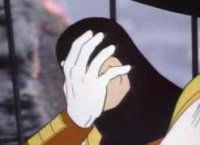
- Offline
- D10
-

- fastkmeans
- Posts: 3456
- Thank you received: 1304
Sag -- I'm in the market for "more is more"
Please Log in or Create an account to join the conversation.
Gary Sax wrote: Hey Gregarius, thanks for the feedback. I'll try to go a little more in-depth with the actual mechanic in future articles to give enough context.
[description snipped]
Gregarius, I would just add one thing to Gary's reply. As he mentioned in the original post up top, each chit can have one or two asterisks indicating how much effort that chit represents. This effort factor comes into play in combat. Recall that each round of a fight your character selects a movement/evasion chit and an attack chit, and those two chits can combine for only two asterisks maximum. The number of asterisks on a chit (0, 1, or 2) indicates how fast and effective that maneuver is, but this effectiveness varies from character to character. For example, a two-asterisk attack for a beefy, plate-wearing knight is probably going to hit very very hard and be a bit faster than his normal attacks, while a two-asterisk attack for a sly duelist may hit marginally hard but be blazingly quick. The chits themselves will indicate speed, power of the attack, and degree of effort.
So you could play a devastating two-asterisk attack, but that would mean that you'd have to use a zero-asterisk maneuver chit and will probably be automatically hit ("undercut") by your opponent's attack. Or you could play a desperate two-asterisk dodge to ensure that you avoid the enemy's attack, but then your attack will likely be slower and/or lighter. And of course you could use any other combination of chits as long as they don't exceed two asterisks.
Where the exhaustion comes into play is that if you do use two asterisks' worth of chits in a combat round you must flip over a chit to indicate that it is no longer available for the rest of the combat. Your character is getting tired and his tactical options are dwindling. Thankfully you don't have to flip one of the chits that you actually used that round, but depending on your character you may not have a lot of those "buffer" chits to expend in this way. Some characters are just more able to engage in drawn-out melees against multiple light-hitting opponents, while others may be great at taking out fierce opponents but will tire quickly.
Please Log in or Create an account to join the conversation.
 Games
Games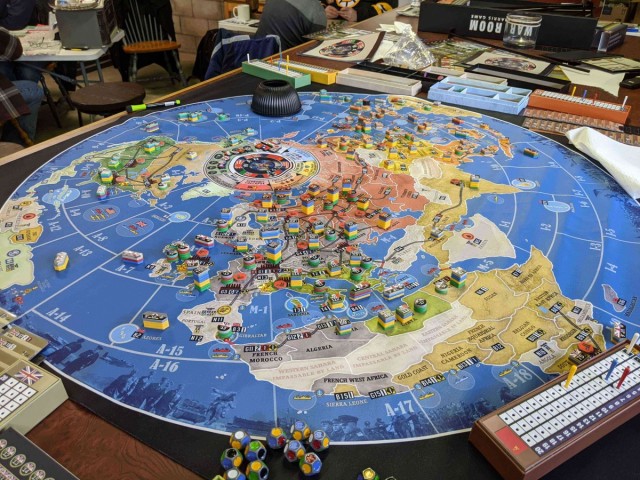
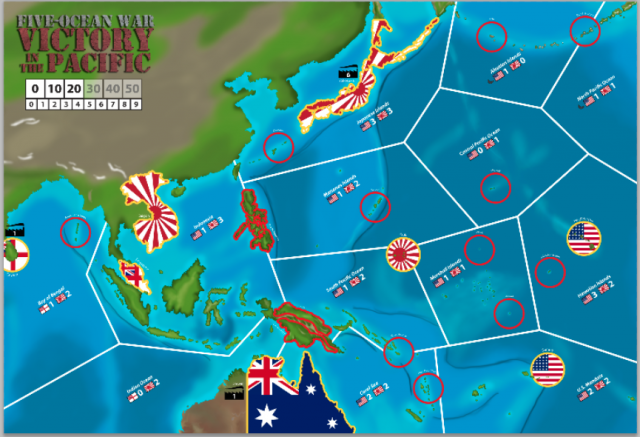








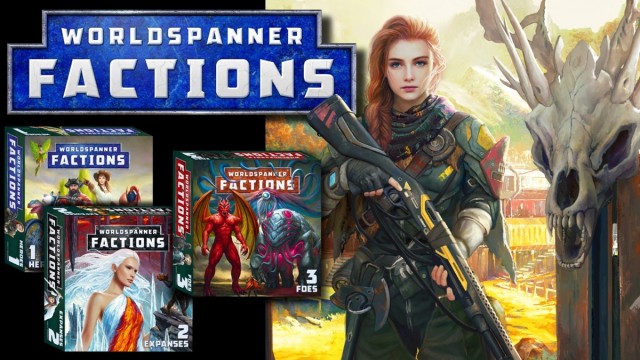
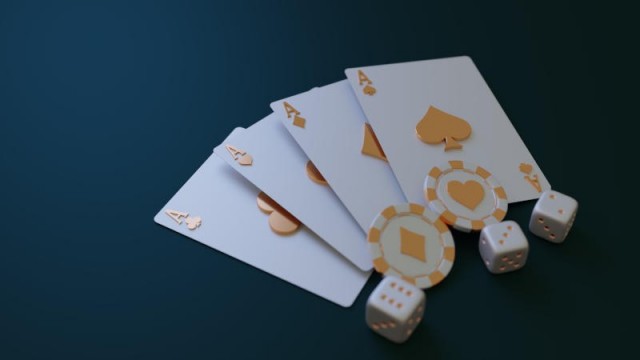


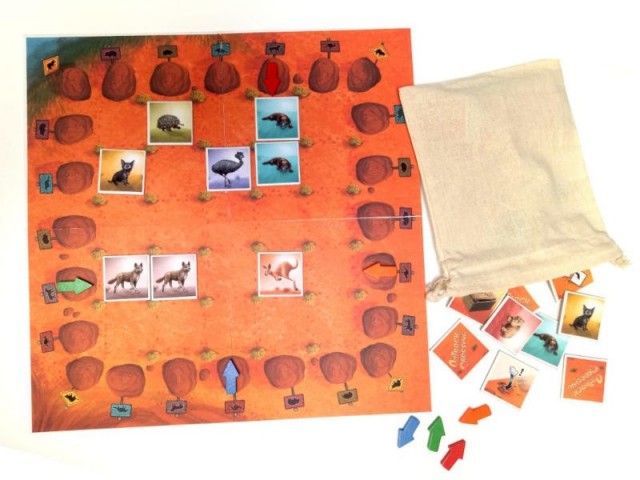
 How to resolve AdBlock issue?
How to resolve AdBlock issue?